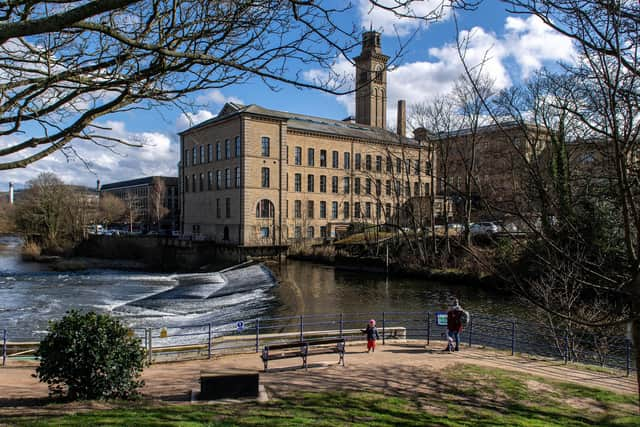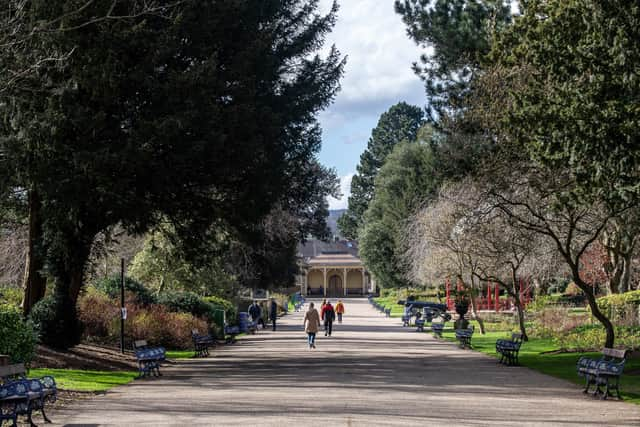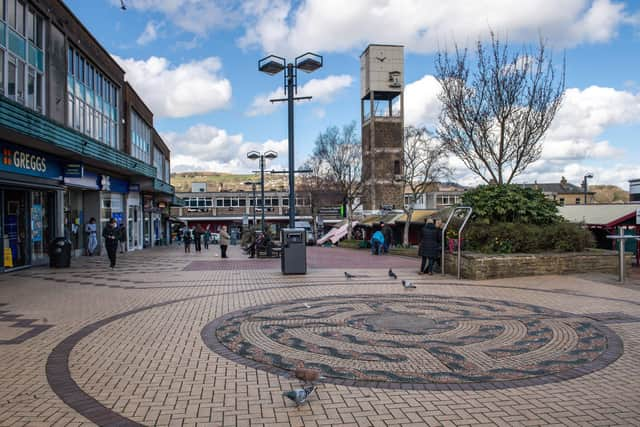How Victorian businessman Titus Salt transformed Shipley and created Saltaire


Historians have always been fascinated by ‘what-if?’ scenarios. What if King Harold had won the Battle of Hastings, and sent William packing back to Normandy? What if the Princess Charlotte, daughter to the dissolute Prince Regent, hadn’t herself died after giving birth to a still-born son? The latter paved the way for Victoria to ascend the throne a few years later.
And, nearer to home, what if a group of Shipley landowners had decided to hang on to a few fields sitting alongside the River Aire, instead of selling them to an entrepreneur like Titus Salt?
Advertisement
Hide AdAdvertisement
Hide AdThe answer to the last is obvious. The town would not have gone on to be at the centre of the industrial revolution, and many thousands of Yorkshire lives would have been completely different. The land was needed to fulfill a demand for housing – the local mills were expanding rapidly, and the workers wanted homes of their own. Or, at least, homes they would rent from the mill-owners.


Three families decided to sell up and to move on. There were the Crompton-Stansfields, the Wainmans, and the estates of the Earls of Rosse. The third Earl was an absentee landlord and (although he was born in York) had probably never even visited his Yorkshire acres on Low Moor and High Moor.
He hung on to a few better parcels of land, but after his death the substantial plot in the Moorhead area was sold off, and in 1870 five streets of terraces quickly went up.
To say that Shipley expanded fast is something of an understatement. In 1822, the population of the town was just over 1,200. Little more than a large village. By 1869, it was around the 10,000 mark.
Advertisement
Hide AdAdvertisement
Hide AdToday, it is just about nudging 30,000. And if we want to identify one man who did more than his share to improve the town and the surrounding area, it has to be Titus Salt.


Salt, who was born in 1803, came from a reasonably comfortable background – his father Daniel ran his own textiles business. Young Titus worked as a wool-stapler in Wakefield before becoming a partner in the family firm. Always inquisitive about creating better products and new techniques, Salt started to acquire his considerable fortune when he experimented with wool from Alpacas and created a lustrous cloth which soon became the height of Victorian fashion. He took over his father’s business and within two decades he was the biggest employer in Bradford.
He was deeply concerned about the air pollution he encountered daily and decided to relocate. He wanted his mill to be large enough to consolidate all the manufacturing processes on one site. He picked his location with great care. Saltaire Mill was adjacent to the Midland Railway line, the River Aire, and the Leeds and Liverpool canal. It was an ideal location.
Salt wasn’t just going to build the mill, he was going to create a whole new community for the Shipley area, which he would call Saltaire. It is, today, a World Heritage site, and Salt gave it everything that he believed was required for the well-being of his workers. Except pubs. He did not approve of what he called “beershops”.
Advertisement
Hide AdAdvertisement
Hide AdOne of the many gems we can still admire today is the gloriously Italianate United Reformed Church, which is (rightly) Grade I listed, and which was designed by the local firm of Lockwood and Mawson, architects who also gave Bradford a lot of its better buildings. Salt and his family are buried in a mausoleum within the church.


He was knighted in 1869, one of the first industrialists to receive that accolade from Queen Victoria. He was actually made a Baronet, which means that the title may be inherited by the eldest surviving son. There are still Salt baronets who are the great man’s descendants today. He had five sons and three daughters, all of whom lived in great style, but none of them made anything like the impact of their father. Among many other achievements, he was Mayor of Bradford, then a senior Alderman. He was a JP, and Deputy Lord Lieutenant of the county, and briefly a Liberal MP. His devotion to Shipley is noted in many ways, for there is a local school named after him, a statue to him in Roberts Park and also that monument par excellence, Salts Mill.
When Salt died in 1876, he was given a civic funeral, and around 100,000 people lined the streets to watch the cortege go by. You get the feeling that he would have been rather pleased that his name lives on, and that so many people find great pleasure in visiting his mill, with all its amenities and the creative atmosphere within.
The fate of most of the other mills was sealed with the decline of the textile industry, and many – like the housing around them, which had declined into little more than slums – were demolished. But not all, and some of those that survived have adapted with the times.
Advertisement
Hide AdAdvertisement
Hide AdThis ‘can do’ spirit in Shipley and the area that surrounds it goes back centuries. Sam Wilson, a local pub owner, showman and would-be impresario, was thought to be wildly optimistic when, in 1895, he proposed a railway that would be gas-powered, and allow access to several public attractions, which would include a funfair and a switchback toboggan ride. Well, the attractions have long gone, but the Shipley Glen Railway glides on, and is looking forward to a reopening when the current restrictions are lifted.
It is, essentially, a funicular, with the lost entrance not far from Saltaire station. It was converted to electricity in 1920, and taken over by Bradford City Council in 2002. Surely, there are few councils that can claim to have a two-car funicular as part of their portfolio? Wilson was also much involved with the early cinema industry in the town, and Shipley, at one point had probably more screens per head of population than most other places in the county. The first recorded “Kinematograph’’ performance was in 1897, in the Tong Park Wesleyan Chapel. Permanent buildings to house the new wonder soon followed – among them the Queen’s Palace Theatre, which was transformed into the Shipley Picture House, The Glenroyal, the Pavilion de Luxe, and the Saltaire Picture House.
Many belonged to a company formed by a forward-thinking businessman called Arthur Shacklock Hyde, and “Shack” built up quite a formidable circuit of sister cinemas. Many will remember the Art Deco splendour of the “super cinema” Glen Royal, which seated around 1,200 movie fans who entered into the gold-effect foyer under a mother of pearl dome. They walked on a specially woven Wilton carpet, and past an illuminated red and black Buddha, which stood on the staircase. Why a Buddha?
It seems that Shacklock Hyde saw it at an auction and bought it as a sort of good luck talisman.
Advertisement
Hide AdAdvertisement
Hide AdThe last films were shown here on December 8, 1962, and “The Glen” went out with The Loudest Whisper, starring Audrey Hepburn. It became a casino and then a bingo hall, before a fire in 2013 led to the building being demolished. But this cinematic legacy hasn’t been erased. These days, there’s a popular Shipley Film Society, which runs a movie season between September and May.
The town is also home to the brilliant Saltaire Brewery, which has been part of Yorkshire’s burgeoning independent beer making scene since 2006.
It’s yet another string to its bow and another reason to raise a glass to Shipley.
Support The Yorkshire Post and become a subscriber today. Your subscription will help us to continue to bring quality news to the people of Yorkshire. In return, you’ll see fewer ads on site, get free access to our app and receive exclusive members-only offers. Click here to subscribe.
Comment Guidelines
National World encourages reader discussion on our stories. User feedback, insights and back-and-forth exchanges add a rich layer of context to reporting. Please review our Community Guidelines before commenting.